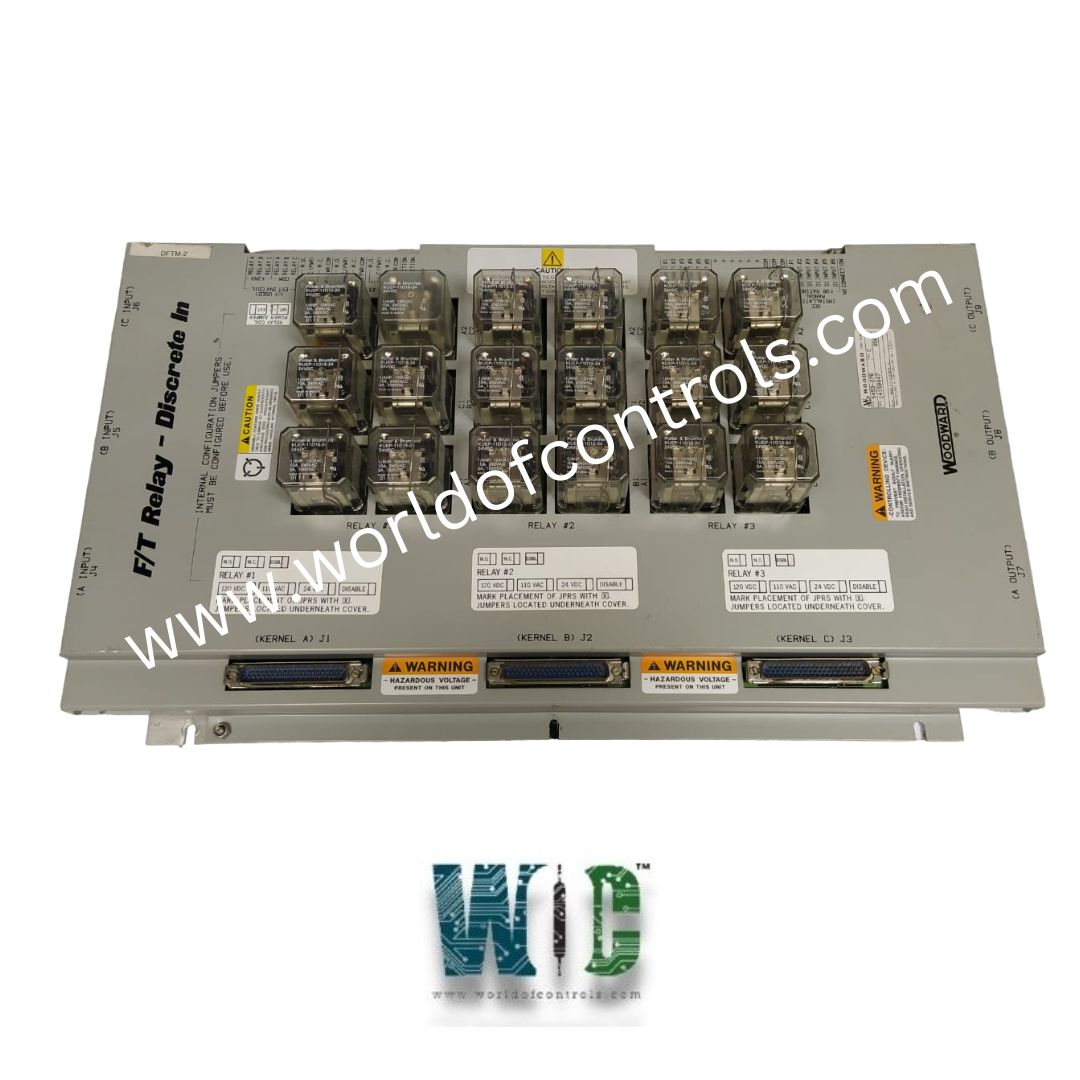SPECIFICATIONS
Part Number: 5453-276
Manufacturer: Woodward
Product type: F/T Relay Discrete Input Module
Availability: In Stock
Country of Manufacture: United States (USA)
Functional Description
5453-276 is a F/T Relay Discrete Input Module developed by Woodward. When considering the installation of the 24/12 TMR Discrete I/O module or the relay module within the context of the FT Relay/Discrete Input module terminal blocks, several critical electrical safety precautions must be observed. These precautions stem from the fact that the presence of 125 Vdc on the FT Relay/Discrete Input module terminal blocks can have cascading effects, potentially resulting in the transmission of this voltage to various connected components, including the relay module sub D connectors and the cables when connected to the relay module.
Product Attributes
- The significance of this situation is underscored by the fundamental principle of electrical transmission: voltages applied at one point in a circuit can propagate through interconnected components. In this case, if the FT Relay/Discrete Input module terminal blocks possess 125 Vdc voltage, this voltage can be transmitted through the relay module sub D connectors and the cables that interface with the relay module.
- To mitigate the potential hazards associated with these voltages, a crucial recommendation is to remove any power from the relay module terminal blocks before proceeding with the installation of the 24/12 TMR Discrete I/O module or the relay module. The rationale behind this recommendation is straightforward: by removing power from the relay module terminal blocks, the risk of transmitting 125 Vdc through the relay module's sub D connectors and cables is eliminated.
- The installation process can become fraught with electrical hazards if these precautions are not meticulously adhered to. The presence of high voltages on components and connectors can lead to electrical shock, equipment damage, or even system malfunction. By adopting the practice of power removal before installation, personnel can safeguard themselves and the equipment from potential electrical accidents.
- In essence, the guidance emphasizes the paramount importance of prioritizing safety during the installation process. While installing the 24/12 TMR Discrete I/O module or the relay module, taking the extra step to remove power from the relay module terminal blocks whenever feasible-proactively minimizes the risk of hazardous voltage propagation and ensures that the installation process is conducted in a secure and controlled manner.
Features
- The described module fulfills a crucial role within the MicroNet control system by serving as an intermediary for discrete signals. This module is specifically designed to capture input signals originating from distinct switches or relay contacts and subsequently transmit this data to the central processing unit (CPU). Its operation is underpinned by a process of receiving, processing, and conveying discrete input signals for further analysis and control within the system.
- One of the notable features of this module is its ability to effectively segregate the discrete signals it receives from the rest of the MicroNet control circuitry. This optical isolation mechanism ensures that the signals remain electrically separate from other components, enhancing overall system safety and reliability. By maintaining this isolation, the module contributes to reducing the risk of interference, noise, or unwanted interactions with other elements of the control circuitry.
- A noteworthy aspect of this module's design is its provision of isolated +24 Vdc power. This power supply is dedicated to energizing the external contacts associated with the 24 Vdc Discrete Input/Output Field Termination Module (FTM). This design choice further enhances the module's functionality, allowing it to handle external connections and manage the associated power requirements independently.
- In cases where the Discrete Input (With LEDs) Field Termination Module (FTM) is utilized, an additional consideration comes into play. Specifically, this module variant necessitates an external contact wetting power supply. The wetting power supply ensures proper functioning of the module's LEDs and aids in maintaining optimal signal integrity. The wetting power supply essentially guarantees that the contacts remain in a clean and conductive state, minimizing potential signal degradation and ensuring reliable LED operation.
World of Controls has the most comprehensive selection of GE and Woodward components. Our professionals are available to help you with your requirements at any time. If you require any additional information, please contact WOC immediately.
Frequently Asked Questions
What is 5453-276?
It is an MicroNet Relay Discrete Input Module developed by Woodward.
Is this precaution applicable only when installing the module, or does it also apply to the relay module installation?
The precaution applies to both installing the 24/12 TMR Discrete I/O module and the relay module. Removing power is advisable before installing either module.
What is the rationale behind removing power from the relay module terminal blocks before installation?
Removing power prevents the transmission of voltage to interconnected components, reducing the risk of electrical hazards during the installation of modules.
Can this recommendation be overlooked in certain cases?
While this precaution is crucial, exceptions could exist based on specific module requirements. However, as a general guideline, removing power is advised for safety.
